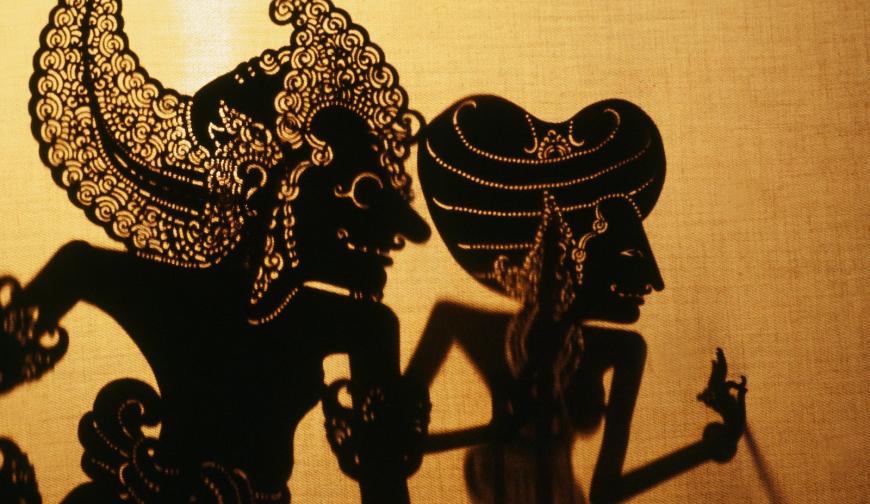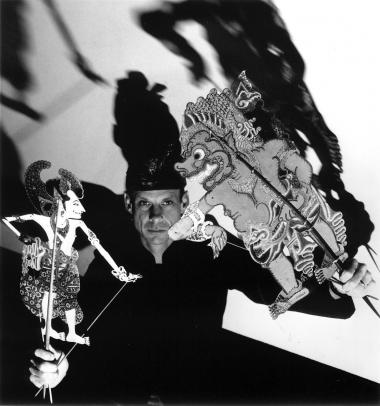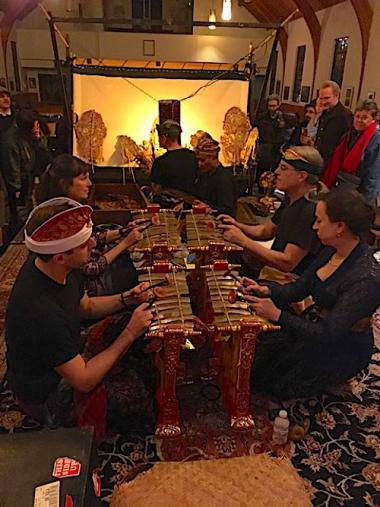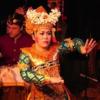
Why a shadow play, SF Classical Voice asked Larry Reed. His answer:
“The first time I ever saw a Balinese shadow play I was filled with sense of wonder and amazement: Intense music, the shadow master reaching around an open flame; giving voice and movement to mythical monsters, gods, and clowns; making the audience of all ages laugh and cry. It was like primordial cartoons, like cave paintings, come to life.
“It has become my goal to bring that sense of excitement to English speaking audiences. The stories take place in an ancient language, translated by servants and clowns into the language of the audience. The stories are a repository of all of human nature. We use humor to connect contemporary events to the mythical past.”
Larry Reed’s ShadowLight Productions is scheduling the following in-person Wayang Bali: Balinese Shadows performances:
— Oct. 16, 7 p.m., Noe Valley Town Square, 3861 24th Street, San Francisco. Free.
— Oct. 23, 7 p.m., Fort Mason Parade Ground (Pope Rd. at Funston), San Francisco. Tickets $16 to $20.
— Nov.19, 7 p.m., 1 Shields Avenue, Mondavi Center, UC Davis Campus, Davis, California. Free.

As events are in outdoor, the organizers urge “dressing appropriately, bringing blankets, chairs or pillows. And a picnic, if you wish.”
That jibes well with the way shadow puppet theater, wayang, is presented in Indonesia, where it originated. It is a dramatic story told through shadows thrown by puppets and sometimes combined with human characters. What will be the stories narrated at these performances? Reed’s reply:
“The shadow master does not announce in advance which story he will perform, since he has the prerogative to change his mind at the last minute to fit better with the current moment.
“The dialogue is entirely improvised. There are always traveling scenes, sad scenes, battles, and romantic moments. The purpose of the shadow play is to bring the forces of good and evil back into balance in both the world without and the world within.”
Shadowlight Productions produces traditional Balinese shadow theater as well as contemporary cinematic shadow theater from around the world. “At a time when movies are full of CGI,” Reed says, “it is exciting to see the ancient analogue forms performed live in real time on the screen. Shadows connect to the part of us where dreams are formed, triggering our imaginations. The audience experiences the story portrayed in shadows in a way that is unique, personal and powerful.”

The creative team includes Reed (dalang, or shadowmaster), Carla Fabrizio, Lisa Gold, Paul Miller, Sarah Willner (ShadowLight Gamelan musicians), Katie Harrell (vocalist) and Fred C. Riley III (assistant).
“I am excited to perform again locally, after a long hiatus,” Reed told SFCV. “Our group will be performing an episode of the Indian Mahabharata myth cycle in the Balinese Shadow Theater style with live gamelan music.”
According to Balinese philosophy, a wayang performance is a symbol of the cosmos. The dalang (shadow master) represents God; the screen represents the world, including the atmosphere; the damar (oil lamp) is the sun, and the banana log underneath the screen is the earth on which the creatures walk. The wayangs (puppet characters) are the creatures. The accompanying music represents irama djaman, which means in phase with the periods of history.
Plots for the shadow play are drawn from the Mahabharata myth cycle. Five brothers are pitted against 100 jealous cousins in a struggle for power involving gods, demons, magical weapons, and the inevitable beautiful princess.
Reed is one of the first Westerners to have trained in the traditional Balinese shadow theatre (wayang kulit) and is a dalang, or “shadow master,” who manipulates over 20 carved leather shadow puppets while simultaneously serving as the conductor of the accompanying gamelan orchestra, the director, and the stage manager. Over the years, he has performed over 250 shows in this tradition around the world.
In the early 1990s, Reed entered a new phase of his career by inventing an ingenious shadow casting method, integrating traditional shadow theater techniques with film, modern theater and dance styles.
Reed has also written, directed, and produced films in the U.S. and Mexico. Shadow Master (1979), his unique “dramatic documentary” on the family of a Balinese shadow artist, has been shown on PBS and Discovery Channel. He also served as assistant director of National Theater of Costa Rica, and performed and choreographed with Anna Halprin and her SF Dancers’ Workshop in the ’60s.
Fluent in five languages, his articles and translation have been published in Asian Theatre Journal and the German Shattentheater (Shadow theater) among others. Reed has garnered numerous awards and honors, and was named one of Top 50 artists in the SF Bay Area by Metropolitan Magazine in 1995 and 1996.




